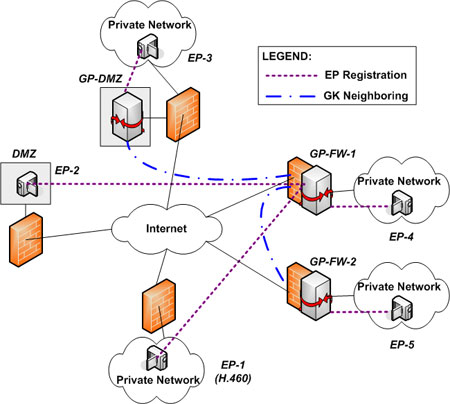Recently, several new standards (ITU-T H.460.18, H.460.19) and vendor solutions have emerged that aim at solving the firewall traversal challenges for secure videoconferencing deployments. The aim of this project is to evaluate these recent developments, and identify the limitations and caveats that exist in their adoption. We are studying state-of-the-art solutions, and corresponding signaling-and-media flow architectures involved in deploying secure videoconferencing systems. The solutions include the Polycom V2IU, GNU Gatekeeper Proxy, and the Cisco PIX with H.323 fixup. We are also conducting tests to study the interoperability, load tolerance and robustness-against-vulnerabilities of these solutions. Ultimately, we plan to develop a list of solutions and best-practices for deploying small-to-large scale secure videoconferencing deployments in campus and enterprise networks.

Figure: Signaling and Multimedia Flow Patterns due to Secure Videoconferencing
Investigator:
Prasad Calyam, Ph.D.
Presentations:
Prasad Calyam, "Balancing Multimedia Performance and Data Security Trade-offs in Secure Videoconferencing Deployments", Internet2 Spring Member Meeting, Arlington, 2008.
News Articles:
"Secure videoconferencing provides key to enhancing education, research collaboration, savings" - by Jamie Abel, Ohio Supercomputer Center Outreach, Supercomputing Online, 2009.
Project Supported by:
